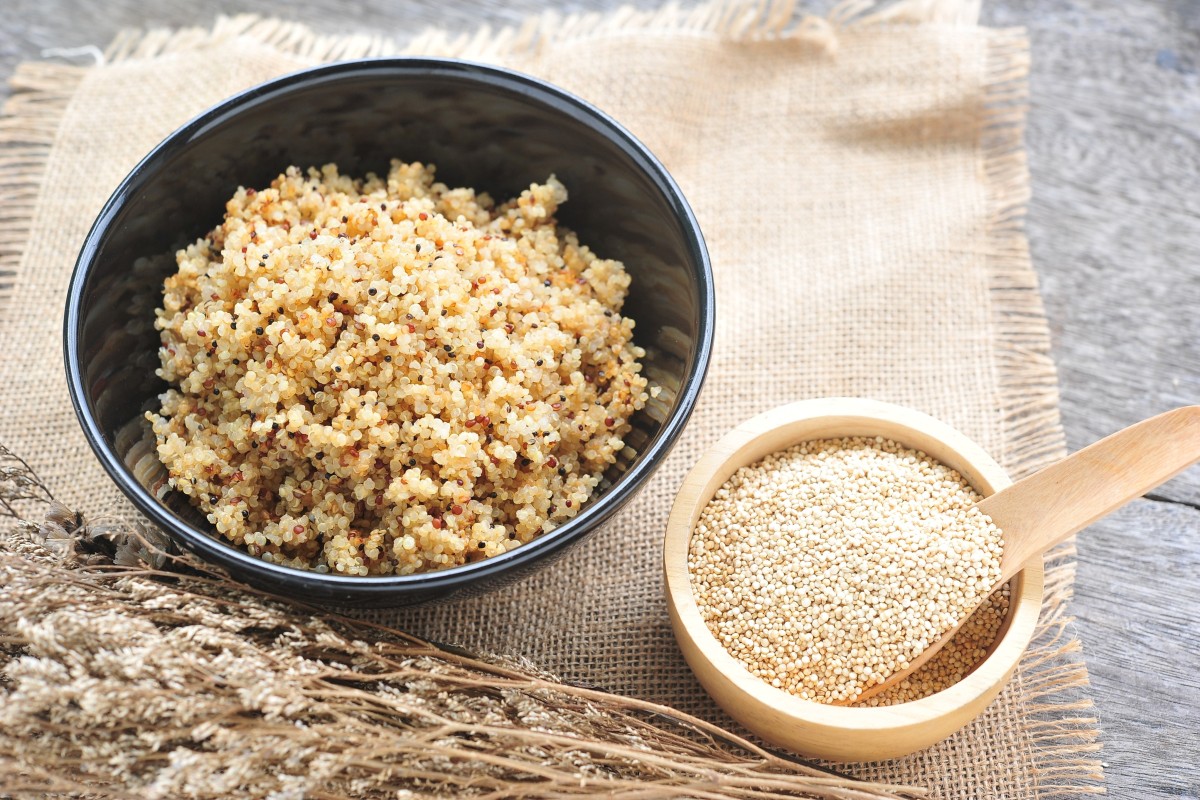
Study Buddy (Challenger): Asia’s middle class seek out low-carb alternatives
- Middle-aged adults who are carbohydrate-wary are increasingly turning towards healthier options like buckwheat soba noodles, quinoa and brown rice
- This page is for students who want to take their reading comprehension to the next level with difficult vocabulary and questions to test their inference skills
 Health-conscious Asians are turning towards alternatives to white rice like quinoa. Photo: Shutterstock
Health-conscious Asians are turning towards alternatives to white rice like quinoa. Photo: Shutterstock Content provided by British Council
Read the following text, and answer questions 1-9 below:
[1] As he hit the age milestone of 50, Singaporean Frankie Mao decided to turn his back on white rice – the mainstay of his beloved chicken rice – joining the burgeoning ranks of carbohydrate-wary Asian middle classes changing their palate to help their health.
[2] In the 11 years since, Mao has subbed in buckwheat soba noodles, quinoa and brown rice, and says he hardly has the white version any more. “After I switched over, I realised that digesting food became so much easier,” said the retiree. “When you eat white rice, you always feel that bloatedness after – which is your body trying to break down the rice and a non-issue if you are young.”
[3] Moreover, it is increasingly easy to get his hands on healthier options now compared to 10 years ago, when he first started his fitness journey. Mao’s transition is reflective of a wider shift towards healthier living and eating habits, which industry players say started to gain momentum across Asia a decade ago and has blossomed into a robust market today, with malls dotted with a range of healthy eating restaurants and cafes offering superfoods, vegan items and dishes conjured from plant-based meats.
[4] Studies say the Southeast Asian plant-based meat market is expected to increase by 25 per cent to US$1.7 billion (HK$132 billion) by 2025. But healthier eating appears aimed at those who can afford it in the middle-to-higher income brackets, due to higher costs. For example, 1kg of quinoa at supermarkets can cost up to S$20 (HK$117) – five times more than white rice.
[5] Therefore, while cauliflower rice, couscous and quinoa may well be on the march, the demise of white rice is greatly exaggerated. “In Asia, rice is a staple that even the very health conscious would not do without,” said Julian Lee, executive director of Singapore-based Nature’s Superfoods, an online organic market. “However, awareness of health and ways to moderate rice consumption – especially white rice – for healthier eating have certainly increased. More people are switching to whole grains like brown rice or quinoa.”
[6] Interest and consumption of “superfoods” – nutrient-rich ingredients – have been growing steadily since 2011, but most still consider white rice a necessity in their diet. The customer base cuts across all age groups, said Lee, from young fitness buffs to seniors looking for ways to improve their nutrition to young parents trying to introduce healthier food for their children.
[7] Besides brown rice or quinoa, cauliflower rice has emerged as a high-carb substitute due to its lower calorie content, said Vin Vin Khu, director of Malaysia-based Meals in Minutes, which offers healthy, ready-to-cook meals. “Superfood bases such as cauliflower rice and quinoa are gluten-free and low in carbs, making them suitable for individuals with gluten sensitivities, and preferred by those on a low-carb diet or Paleo diet,” she said.
[8] That said, Mao admits many of his friends “cannot change” the white rice habit of a lifetime. “Only when you get into fitness, then you would look into nutrition. Otherwise, there is no motivation to improve your diet,” he said.
Source: South China Morning Post, November 18
Questions
1. Find a word in paragraph 1 which means “the most important part of something”.
2. In paragraph 2, what sort of change did Mao see after switching out white rice in his diet?
A. physiological
B. mental
C. emotional
D. behavioural
3. According to paragraph 3, Mao was able to switch from white rice to other alternatives because of …
A. the influence of his friends’ eating habits.
B. advancements in technology for producing rice replacements.
C. the availability of affordable healthy options.
D. all of the above
4. What might the writer be trying to suggest by quoting studies on the Southeast Asian plant-based meat market in paragraph 4?
5. Why might the demise of white rice be “greatly exaggerated”, according to Julian Lee in paragraph 5?
6. According to paragraph 6, identify the trend in the interest and consumption of “superfoods” over the years. (2 marks)
7. Name two groups of people who would likely try white-rice alternatives when dining out, according to the information in paragraph 7.
8. Based on your understanding of paragraph 8, what would Mao’s friends need to prioritise in order for them to “change” the white rice habit?
9. Which of the following is the best alternative title for the text?
A. Decline of white rice in Asian diets
B. Rise of health-conscious eating habits in Asia
C. Growing market for superfoods and plant-based meats in Asia
D. Challenges of switching to healthier food options
Answers
1. mainstay
2. A
3. C
4. There is a growing trend and market demand for plant-based meat alternatives in Southeast Asia. (accept all similar answers)
5. In Asia, rice is a staple that even the very health conscious would not do without.
6. It has been steadily growing since 2011.
7. People looking for a low-carb diet or Paleo diet, and individuals with gluten sensitivities
8. They would need to focus on their fitness and nutrition in order for them to make the switch and change the habit.
9. B
